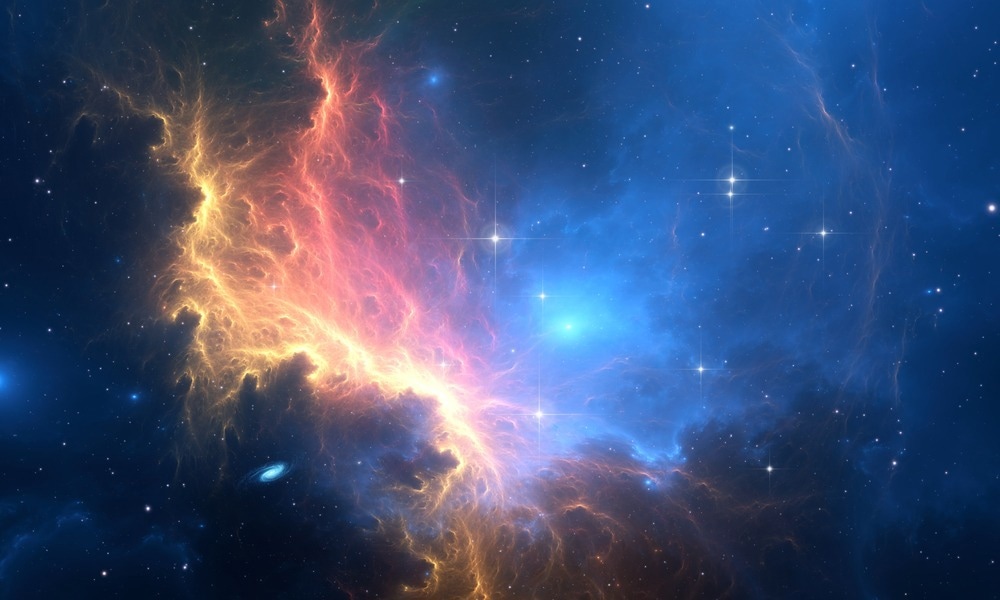A Northwestern University-led team of astrophysicists, utilizing NASA’s James Webb Space Telescope (JWST), has conducted groundbreaking research on galaxies in their 'teenage' years. This study is a part of the CECILIA (Chemical Evolution Constrained using Ionized Lines in Interstellar Aurorae) Survey and has been published in The Astrophysical Journal Letters. The primary focus of this research is the chemical composition of these distant galaxies, essential for understanding the evolution of the universe.

Image Credit: Jurik Peter/Shutterstock.com
The researchers focused on galaxies that formed two to three billion years after the Big Bang. These galaxies, in their adolescent years, are characterized by high temperatures and an unexpected presence of heavy elements, including nickel. The observation of nickel, typically difficult to detect, has provided new insights into the process of galactic evolution. The study, led by Allison Strom, an assistant professor of physics and astronomy at Northwestern's Weinberg College of Arts and Sciences, seeks to understand the changes and growth in galaxies over the universe's 14 billion-year history.
Named after astronomer Cecilia Payne-Gaposchkin, the CECILIA Survey examines the spectral light from distant galaxies. This examination is akin to studying a galaxy's 'chemical DNA,' providing insights into their developmental stages and aiding in predicting their future evolution. This research is crucial in forming a comprehensive understanding of how galaxies mature over time.
The study involved observing 33 distant galaxies over a period of 30 hours, combining spectra from 23 of these galaxies to create a composite image. This method enabled the researchers to identify fainter features, thereby enhancing our understanding of these celestial bodies. The spectra revealed various elements, including hydrogen, helium, nitrogen, oxygen, silicon, sulfur, argon, and notably, nickel.
One of the study's significant findings is the high temperatures in these teenage galaxies, exceeding 13,350 degrees Celsius (24,062 degrees Fahrenheit). These temperatures are much higher than those typically recorded in galaxies, highlighting the unique chemical and physical characteristics of galaxies during their adolescent phase.
This research was supported by NASA, the Pittsburgh Foundation, and the Research Corporation for Scientific Advancement. Data were sourced from the Mikulski Archive for Space Telescopes at the Space Telescope Science Institute and the W.M. Keck Observatory, showcasing the collaborative nature of astronomical research.
In conclusion, the discovery and examination of these hot, element-rich teenage galaxies represent a significant milestone in our quest to understand the universe. As data analysis from the JWST continues, more secrets of the cosmos are being revealed, offering a more detailed picture of galactic evolution and the intricate processes that shape our universe. This study not only emphasizes the capabilities of modern telescopes but also highlights the ongoing pursuit of knowledge and scientific inquiry in astrophysics. The research underscores the importance of collaborative efforts in advancing our understanding of the universe.
Sources:
Amanda Morris (2023) ‘teenage galaxies’ are unusually hot, glowing with unexpected elements, Northwestern Now. Available at: https://news.northwestern.edu/stories/2023/11/teenage-galaxies-are-unusually-hot-glowing-with-unexpected-elements/ (Accessed: 21 November 2023).
Strom, A.L. et al. (2023) ‘Cecilia: The faint emission line spectrum of Z ∼ 2–3 star-forming galaxies’, The Astrophysical Journal Letters, 958(1). doi:10.3847/2041-8213/ad07dc